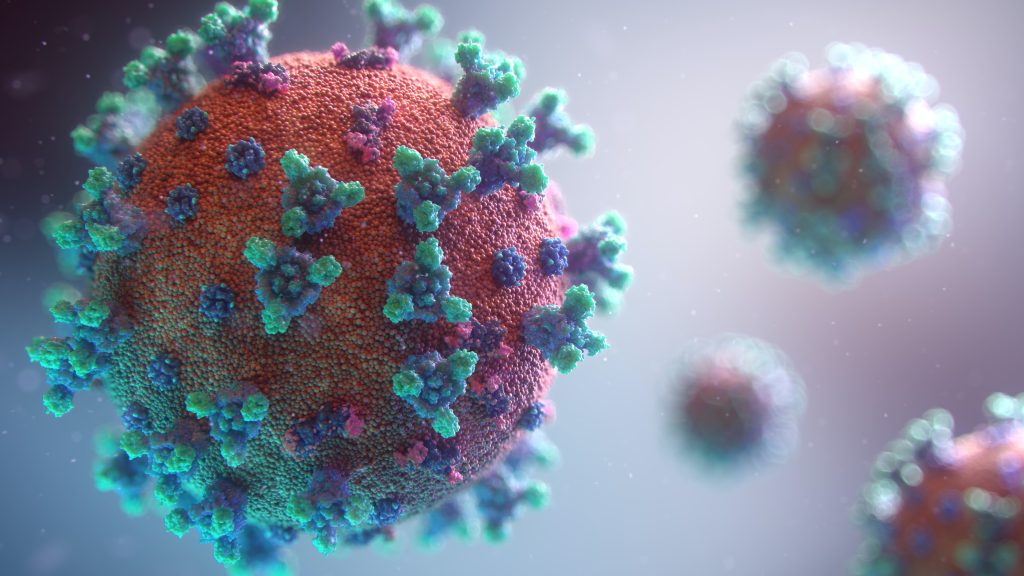
What is a Coronavirus?
Coronavirus (CoV) refers to a family of viruses that can cause illness in both humans and animals, mainly respiratory or intestinal. Coronaviruses have been around for a very long time; they are typically mild, and usually only affect the upper airways (nose and throat).
Four major types of coronavirus have been shown to exist, namely Alpha, Beta, Delta, and Gamma, although only the first two of these are known to infect humans. Just four strands of coronaviruses (229E, NL63, OC43, and HKU1) combine to cause 10 – 30% of cases of the common cold across the world.
Major coronaviruses include Severe Acute Respiratory Syndrome (SARS) and Middle East Respiratory Syndrome (MERS). SARS was predominantly seen in China between 2002 and 2003, and MERS on the Arabian peninsula in 2012. The latest widespread coronavirus, Severe Acute Respiratory Syndrome Coronavirus 2 (SARS-CoV-2) was first reported in Wuhan, China, on December 31st 2019 after an outbreak of severe pneumonia. On February 11th the World Health Organisation (WHO) formally named this disease COVID-19.
Like many coronaviruses, SARS, MERS, and COVID-19 are all zoonotic. Bats are thought to be the cause of many coronaviruses but they rarely pass the virus directly to humans. These three coronaviruses cause severe infections by latching onto proteins which sit on the outside of the lung. The attachments this creates are a key factor in affording the virus the ability to penetrate much more deeply into their host’s airways than their cold-causing kin.
What does COVID-19 look like?
The name coronavirus has more to do with shape than with genetics. Corona – latin for crown – refers to the protein spikes coating the spherical cells. These spikes are what helps the virus latch onto and infect healthy cells. These same spikes also allow the immune system to “see” the virus. Proteins from these spikes are also being used in potential vaccines, to prompt the body to produce antibodies. This method of using partial, or dead, pathogens is very common in vaccine manufacturing.
Under these spikes is a layer of membrane. This is easily disrupted by common detergents. Soap and water, as well as alcohol-based antibacterial gels, are very effective against this membrane.
Delving deeper, inside the membrane is the virus’s genetic code, or genome. Human cells, as well as other common diseases such as chickenpox, have DNA, whereas coronaviruses have RNA. RNA viruses have smaller genomes, and thus are subject to almost constant change. This change is known as mutation. Mutations help the virus adapt to environments rapidly, and infect new host species. Whilst it is thought that COVID-19 originated from bats, it is still unclear if mutations within the virus caused the human contamination.
What is different about COVID-19?
SARS-CoV-2 is very closely related to SARS-CoVs commonly found in humans, bats, pangolins and civets. Whilst its name suggests its similarities to SARS, there are many differences between their respective genomes. This affects the way they are passed, and the symptoms they cause. Whilst the new virus is more contagious, it is much less likely to cause severe illness in patients.
Why does COVID-19 vary so much person to person?
Specific responses to coronavirus infections are thought to be linked to genetic differences between people. This is also the case for influenza. It is estimated that 80% of individuals experience mild or moderate forms of the disease, 15% require hospitalization, and only 5% will become critically ill. Certain factors, such as age, obesity, and underlying health conditions can also contribute to higher risk.
One of the biggest questions asked by medical researchers is why some young people, with no high risk factors, get extremely ill. The answers are thought to be inside the human genome.
Any two people share genomes that are 99.9% similar, but the 0.1% difference is what can drastically change the way our immune systems process infection. For example, when people are infected with coronavirus, fragments of the virus will be seen by the immune system differently from person to person. This could mean that two immune systems have wildly different methods and success in fighting the disease.
There are many human genes involved in responding to infection. These genes are very diverse within the genome itself. The X chromosome has many of these genomes and this may be a contributing factor as to why men (who only have one X chromosome) are more severely affected by COVID-19 than women (who have two X chromosomes).
So what now?
On March 11th the WHO declared the outbreak a pandemic, leading many countries to enforce lockdown procedures. Economies took a nosedive, people lost their jobs, and some companies shut their doors forever. As most countries begin to open doors again, fear still hangs in the air.
As of 6th September the world has seen over 26.7 million cases of confirmed COVID-19 and sadly a resultant 876,616 confirmed deaths. The USA has seen the most cases in the world, and the UK has seen a doubling in reported cases (from 1,477 to 2,988). Countries are starting to experience secondary spikes, and it looks as though things are likely to get much worse before they get any better.
References:
What is coronavirus? The different types of coronaviruses https://coronavirusexplained.ukri.org/en/article/cad0003/
Coronavirus and human genetics: Why do cases of COVID-19 vary?
https://coronavirusexplained.ukri.org/en/article/cad0009/
Explainer: What is a coronavirus?
https://www.sciencenewsforstudents.org/article/explainer-what-is-a-corona
Facts and figures about the coronavirus disease outbreak: COVID-19
https://www.doctorswithoutborders.org/covid19
Coronavirus in the UK
https://coronavirus.data.gov.uk/cases
WHO Coronavirus dashboard
https://www.newscientist.com/term/covid-19/
Ellie Matthews
